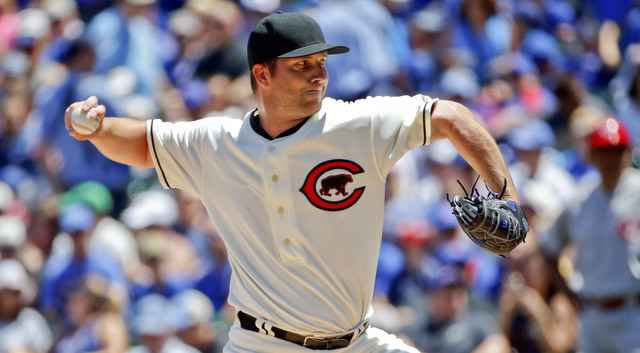The following is a guest post from longtime reader Tarik Shah, who wrote about new old Yankee Adam Warren. Tarik previously wrote a guest post about the Yankee fandom in his family.

Ever since the departure of Robinson Cano to the Pacific Northwest, the Yankees have gotten cute trying to fill the gaping hole in their middle infield. First, in 2014, the ghost of Brian Roberts was given a shot, which predictably required the Yankees to acquire Martin Prado midseason. Prado performed admirably (147 wRC+ in 37 games), but it was not to be, as he was included in the trade that brought Nathan Eovaldi to the Bronx.
The 2015 season brought the great Stephen Drew experiment. The experiment, I believe, wasn’t to discover whether Stephen Drew could be a capable second baseman, but whether he could consistently hit a home run at the exact moment when the front office, coaches, and fans had exhausted their patience with his subpar play, thereby securing more playing time. By that metric at least, the experiment was a success.
Ultimately, this past offseason Brian Cashman made a risky move in acquiring the talented but enigmatic Starlin Castro from the Cubs. The new Yankee second baseman’s play thus far has been uninspiring. Castro accumulated 0.2 fWAR through his first 96 games. For reference, the much pilloried Stephen Drew accumulated 0.2 fWAR in 132 games. Of course, the cost to acquire this thus far unimpressive infielder is the subject of today’s article, Adam Warren. As has been widely reported, Mr. Warren is set to return to the Bronx as part of the trade that will send Aroldis Chapman to the Cubs.
When Warren was traded away, many fans were concerned as Warren had pitched well as a Yankee (2015: 3.29 ERA/3.59 FIP/3.89 xFIP in 131.1 IP). In particular, he occupied the often referenced, but rarely filled, Ramiro Mendoza slot. Such a player would be valuable to a team that had trouble in the back-end of its bullpen and rotation, so when the back-end of the Yankees bullpen and rotation stumbled, Warren’s loss was acutely felt.
However, casual fans, or those who only follow the Bombers, might be surprised to find out that Adam Warren has not performed well this year. In fact, his performance had been so poor, the Cubs recently demoted him to AAA (2016: 5.91 ERA/5.83 FIP/5.23 xFIP in 35 IP).
| K% | BB% | HR/9 | |
| 2015 | 19.5 | 7.3 | 0.69 |
| 2016 | 17.8 | 12.5 | 1.80 |
Giving up more walks, hits, home runs, and striking out fewer batters is no recipe for success. So what has changed for Warren, and what might he be able to tweak upon return to Yankee Stadium? The first thing that jumps out at you when looking at his batted ball profile is that he’s giving up more fly balls, and of those, more are going for home runs. The league average HR/FB is around 10%, so hopefully Warren can benefit from some regression to the mean. Even so, Warren’s xFIP sits at 5.23, which is not that far off from his 5.83 FIP. So, regression there will only help so much.
| LD% | GB% | FB% | HR/FB% | |
| 2015 | 22.8 | 45.2 | 32.0 | 8.3 |
| 2016 | 16.3 | 43.3 | 40.4 | 16.7 |
Warren has also not been as proficient at stranding runners this year, as he has throughout his career. His LOB% this year sits at 64.7% whereas it’s 75.8% for his career. Perhaps this too is an area where Warren can benefit from some regression.
As far as his pitch selection is concerned, so far in 2016 it seems that the only thing that Warren has changed is that he’s scaled back on sliders and curveballs, while going to his changeup more often. Unfortunately, this doesn’t help us explain why Warren has been struggling, as his change up has actually been worth 2.47 runs per 100 pitches.
| FB% | SL% | CB% | CH% | |
| 2015 | 44.8 | 29.0 | 11.1 | 15.1 |
| 2016 | 44.9 | 25.5 | 7.5 | 22.1 |
| Career | 45.5 | 27.3 | 10.3 | 16.9 |
Has the velocity of his pitches decreased or changed significantly? It seems not. In fact, if you were to look at any number of Warren’s metrics you’d find that there has not been much of difference between what he did last year, and what he’s done this year, save for the results.
| FB (MPH) | SL | CB | CH | |
| 2015 | 92.5 | 87.2 | 79.4 | 84.3 |
| 2016 | 92.8 | 87.4 | 79.9 | 84.5 |
Unfortunately, this comes to an incredibly foreseeable and unsatisfying ending. Adam Warren has thrown 35 poor innings this year, not a very significant sample size. Reliever performance is volatile and subject to the effects of small sample sizes.
As far as can be told from the information available, Adam Warren the Cub is not much different from Adam Warren the Yankee, and yet, Adam Warren the Cub has not performed well. Brian Cashman knows this, and is hoping that with a little help from the cruel goddess of reliever volatility, Adam Warren can once again pitch like the Yankees version of Adam Warren.
Leave a Reply
You must be logged in to post a comment.